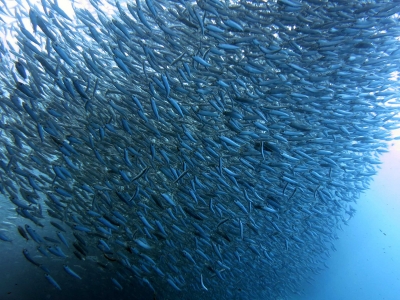
When one hears the word “migration”, what one thinks of is perhaps the large-scale wildebeest migration in Africa, or even the seasonal migration of birds between countries and continents. Did you know several other creatures – including marine – also migrate? Let’s take a look at one such annual event that happens underwater.
Occurring from May through July/August, South Africa’s east coast hosts a spectacular annual migration of sardines. What makes this spectacular? Consider this in the blue waters of the Indian Ocean, millions of sardines move in silvery masses that can totally be a few km wide, many km long, and several mt deep. To add to the drama, tens of thousands of birds, including cormorants, terns, and gulls swoop down on the shoals, while dolphins, sharks, whales, seals, and even some species of fish gobble up these sardines. “Bottlenose and common dolphins work together in a sheepdog fashion, forcing thousands of fish at a time into ‘bait balls, forcing them closer to the surface where they can pounce on” the fish.
The sardine run attracts even humans, making it a phenomenon of great economic significance too-while fisherfolk catch and sell fish, many tourists use this occasion to watch sharks, dolphins, whales, etc. Though this migration is large, in terms of sheer number, it is not as well-known or well-documented as the wildebeest migration occurring on the same continent. It is also not clear what causes the migration, though there are several theories. One is that it is a seasonal reproductive migration, and another states that as cold-water fish, they migrate to avoid the seasonal warm currents and reach places with cooler currents. Irrespective of their reasons for migration, what is of concern is that the run may no longer be a phenological event. A phenological event is a biological event that occurs at the same time every year. A study found that over the last 66 years, “sardines arrived off the coast of Durban increasingly late- at a rate of 1.3 days later per decade. Over the six decades this has meant the date has changed from arrivals as early as mid-June at the beginning of the record to dates as late as mid-July in the last decade”.
Picture Credit : Google




